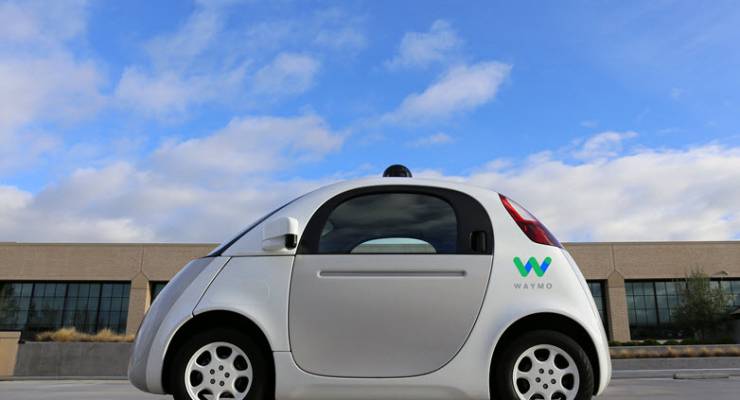
The wait for self-driving cars has been agonising. In 2012, self-driving cars were just five years away. In 2017, Elon Musk pledged progress within “three months maybe, six months definitely.”
Here we are in 2018, and just a few, semi-autonomous cars are on the road. And they are failing us in awful ways. Both Tesla and Uber semi-autonomous vehicles have had fatalities this year, while operating under computer control. In both cases, a human driver was present but seemingly overconfident in the system’s capabilities.
Robot cars just aren’t that good at some things humans take for granted — like seeing things straight in front of them. Machines can’t see the patterns we can see, and don’t respond in the same ways. They still can’t handle our roads.
At this time it is helpful to take a step back and ask, why? How did we come to overestimate the capacity of machines to do this task?
Pattern repeating
When it comes to the question of robots taking over the world, humans turn out to be slow learners. We keep making the same mistake — assuming a Jetsons‘ future is close to hand.
In the 1980s, a young robotics researcher named Hans Moravec had an insight about the robots he was working on. They could do “hard” tasks well — things like calculating, memorising and playing chess, but not “easy” tasks. A robot can’t (or couldn’t then) walk up stairs or work a door handle.
This has come to be known as Moravec’s paradox. He speculated it was to do with evolution.
“We are all prodigious olympians in perceptual and motor areas, so good that we make the difficult look easy. Abstract thought, though, is a new trick, perhaps less than 100,000 years old. We have not yet mastered it. It is not all that intrinsically difficult; it just seems so when we do it.”
Yes, Moravec is calling you stupid. And me, and himself.
We see ourselves as smart because we’re smarter than all the other animals. Meanwhile, we’re no match for most other animals physically, so we discount our capacities. But in fact, we remain like them. We have far more in common with a chimpanzee than a central processing unit. You can’t shake off billions of years of evolution that easily.
I may be one of the clumsiest beings in the animal kingdom (you should see me attempt sports) but that turns out to be a tremendous lead over where computers are at.
Robots taking your jobs
Truck drivers, it is now widely believed, will be an endangered species within a few years. Robots will take their jobs swiftly, decisively and totally, with horrible consequences for the economy.
Humans generally rank jobs by their abstract cognitive ability requirements. We see some jobs as hard — like being a surgeon. Other jobs we see as easy — like driving a truck. Now, being a truck driver is a manual, somewhat routine job.
We might assume early robots will take jobs with low cognitive ability requirements, while later, more advanced robots will take the cognitively demanding jobs.
In fact, what we observe is jobs in accounting and finance being stripped away by computerisation. Companies like MYOB and Xero are stealing business from local accountants with their handy software, while algorithms are taking the jobs of hedge fund traders.
Making the world safe for robots
Robots can of course do manual work, far faster than a human, in the right circumstances. Driverless trains already run, cheaply and tirelessly — on separated tracks. We can make robots work for us when we remove physical complexity and the need for them to make judgements.
To me, this implies that we will have to make the world safe for driverless cars in order for them to make it safer for us. They will need highly regular, highly predictable highways and roadways on which to drive.
So I am highly sceptical robot drivers will be a serious part of the centre of our cities any time soon. The narrow streets of city centres — crowded with pedestrians and bicycles — will likely be the domain of our animal brains for a long time to come.








Yep, it’s true, what we take to be fairly basic is highly advanced, witnessed by the inability of computers to replicate simple human behaviours and tasks.
Driving is so much more complicated than it is given credit for, and driving around Sydney is an olympian task indeed. A lot has to change before that will work, although warning bells and whistles will continue to emerge. Imbecile pedestrians taking ridiculous chances are a fact of life, as are bicyclists. Had 3 prime examples in the last two days alone.
Oh please, its only a few short years ago that some cities in the world started experimenting with autonomous cars, now almost every western country is doing so. Yes there are a few breakthroughs necessary to make the fully autonomous car a reality, but we know they’ll happen. The mining industry is already using robot trucks in their mines. Farmers have robot machinery for their fields. Medium prices cars already have semi autonomous features for parking and motorway driving.
Forget about the US or European car manufacturers of the world, its the Chinese and Indians that will eventually drive the change. Cheap to buy and maintain, mass produced small electric autonomous cars will save them from having to import a great deal of oil and will make their roads safer than ever.
Your two examples of mining and farming pretty much make the point in the article as in both cases there are no people or traffic to get in the way.
I’m not saying there aren’t problems, but we’ve already made great strides in object avoidance, much of it initially driven by the drone industry. These days we can send a drone from points A to B through a forest without crashing into anything, that was a major breakthrough, now its common place and the technology is relatively easy to adapt to vehicles. Make no mistake, autonomous vehicles are happening on road, sea and air, and once it starts it will happen very quickly. Can you imagine the lure of a truck or taxi that can operate 24/7 without a break or a driver’s wages? It will be a major disruptor in our lives, not least the loss of millions of driving related jobs, so we better get used to the idea and prepare for it.
“and once it starts it will happen very quickly.”
Exactly. People forget the internet wasn’t really a “thing” until the late 90’s and look at it now.
Even autonomous vehicles were only a gleam in DARPA’s eye up until the late 2000’s https://en.wikipedia.org/wiki/History_of_autonomous_cars#2000s
And here we are only 8 years later saying “It’s a long way off…”. When it happens, it’ll happen quickly and will more than likely be in the early 2020’s ;o)
The first step might be self-driving cars on dedicated roads (like trains on railways).
I suspect it will become common place on motorways within 5 years.
It is simply a matter of restructuring the roads. Put a 0.5 meter barrier between automated lanes and human driver lanes, with enforced slowdown at intersections for automated vehicles
Not necessary Smit, autonomous cars already, under driver supervision, regularly drive safely on some motorways overseas. Accidents have been very few and far between, and when they occur they get enormous coverage and safety investigations, similar to air crashes (as they should).
So a robotic driver in charge of a vehicle confined to preprogrammed parameters on specific routes… sounds like the Iron Horse to me.
Bring it on.
Especially those cheap Indian/Chinese autos once they lick the range limit.
Have a look at what’s just about to leave the laboratories (RMIT, Melbourne).
The proton batteries are coming!